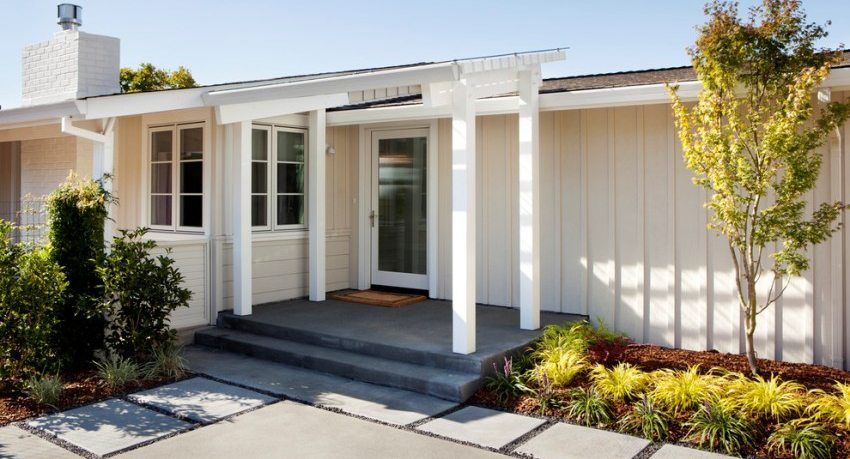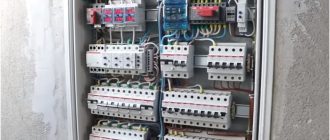Not a single site of industrial and residential construction is complete without the use of concrete. The quality of this artificially obtained material directly depends on the sequence of mixing and the ratio of components used. The table “Proportions of concrete per 1m3” will orient in the most correct distribution of the constituent parts of the solution for use in various constructions.
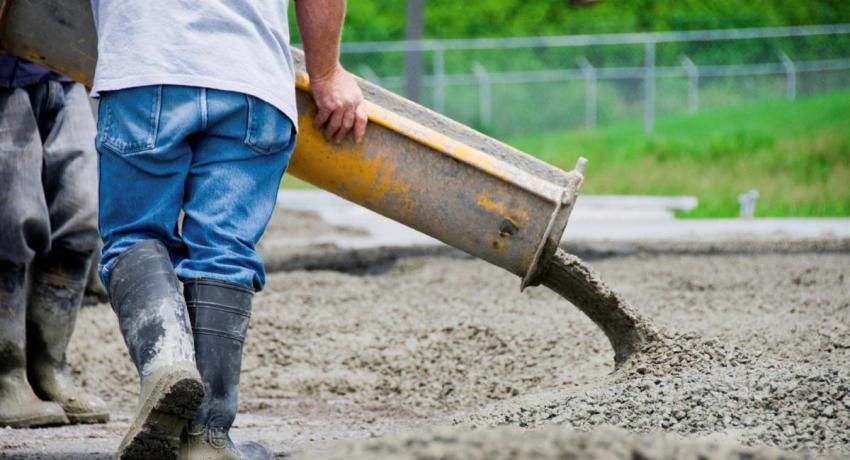
Specifications of concrete
Cement and water, which are part of the concrete, when mixed, form a mass that, when solidified, turns into a cement stone. In this form, this material is easily deformed, many microcracks form in it, which leads to significant shrinkage.
The addition of fillers (crushed stone, sand, gravel, etc.) to the cement mixture contributes to the formation of a kind of reinforcement, which takes on internal stress. Due to this, the strength indicators are improved, the mobility of the mixture and the deformation due to shrinkage are weakened.
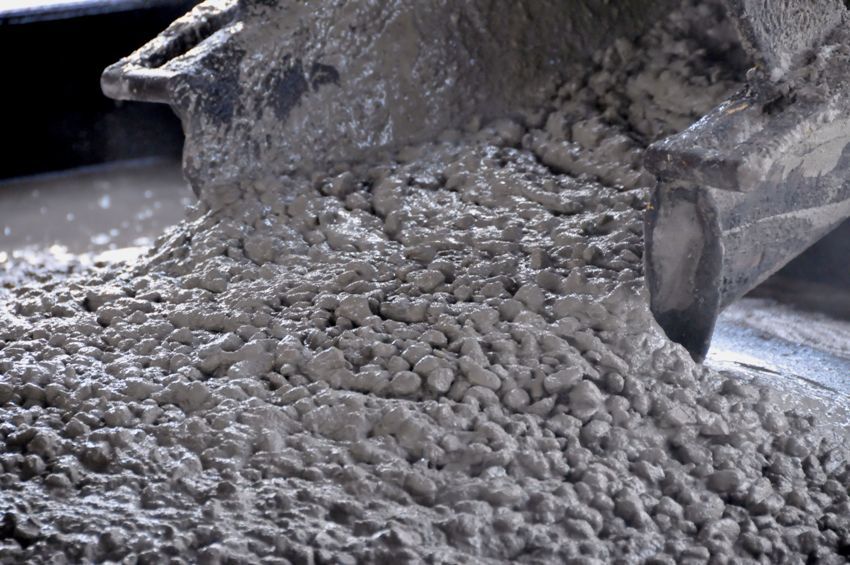
Given the degree of strength of concrete, the material is divided into classes (denoted by “B”) and brand (denoted by “M”). The higher the numerical values of concrete grades (for example, M200, M300 or M400), the more durable is the material. It depends on the class and brand, in which types of structures it will be used.
If the construction of your object is supported by a project, then it already predetermines the concrete marks necessary for the construction of the foundation or other structures.
Table of concrete strength indicators:
| Brand of concrete | M75 | M100 | M150 | M200 | M250 | M300 | M350 | M400 |
| Load (standard), kgf / cm2 | 65 | 98 | 131 | 196 | 262 | 294 | 327 | 393 |
Concrete mixes with different brands are used for various types of structures.
The table shows the scope of the possible use of concrete, depending on the brand:
| Mark M100-M150 | Mark M200-M250 | Mark M300 | Mark M350 | Mark M400 |
| Base (substrate) for screed, foundation, tile or path of concrete. | Foundations of one-story buildings, screed, blind area, grounds, stairs. | Strip foundations, solid walls, screed, blind area, platforms, stairs. | Casting reinforced concrete structures (beams, supporting columns, bolts, lintels, floor slabs, pools). | Hydraulic structures (dams, bridges), fortifications (bunkers, storage). |
Consumption and proportions of the basic ingredients of concrete depends on many factors. As for sand, it is necessary to take into account its moisture, size, impurity content. For rubble and gravel, indicators of humidity, pollution, voidness, non-standard inclusions (garbage) matter.
For cement, its grade is taken into account. The type of work for which a concrete solution is being prepared is also taken into account: a concrete screed, foundation casting, walling, etc.
The main component of the concrete solution is cement. The ratio of consumption of this material expresses the brand of concrete. Brand of concrete is higher, the more in its composition of cement.

Traditionally, concreting is carried out at a time when the air temperature has a positive value. This contributes to high-quality solidification of the solution.
Helpful advice! It is not recommended to perform concrete work at negative temperatures, due to the possible likelihood of poor-quality material.
Working with concrete in the cold period of the year there is a chance that the water in the composition of the solution will become icy and become a source of destruction inside the material. Thus, durability will decrease.
Seizure of concrete occurs in a period of 12 hours, in a two-week period, concrete accumulates 80% of strength. Operation of the finished design becomes possible in a month.

When purchasing compound ingredients to prepare a solution, make sure (as far as possible) in their quality:
- water: fresh;
- sand: should not contain clay in its composition, you can visually check by color. If the sand is yellow saturated color – then the clay content in it is large. White or gray sand is used for the mortar;
- cement: bags of cement should not have hardened parts to the touch and the material should be made no earlier than four months from the date of purchase;
Helpful advice! When purchasing cement, pay attention to the labeling. Only with proven manufacturers, the labeling on the bag corresponds to the quality of the cement contained in it.
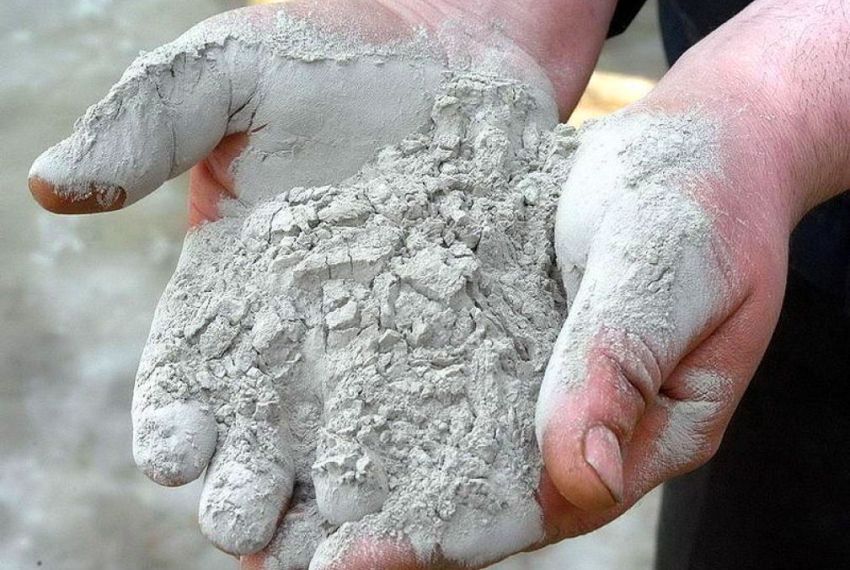
- crushed stone: pure material is used, without dust and other inclusions. Otherwise, adhesion to the mortar will be insufficient, which will adversely affect the strength of the concrete. Ideal crushed stone granite rock;
- in addition to crushed stone, gravel (usually used for grade 450), limestone (suitable for grades 100 and 300), granite (characterized by strength, frost resistance and low water absorption) are used as coarse aggregates for the concrete mix.
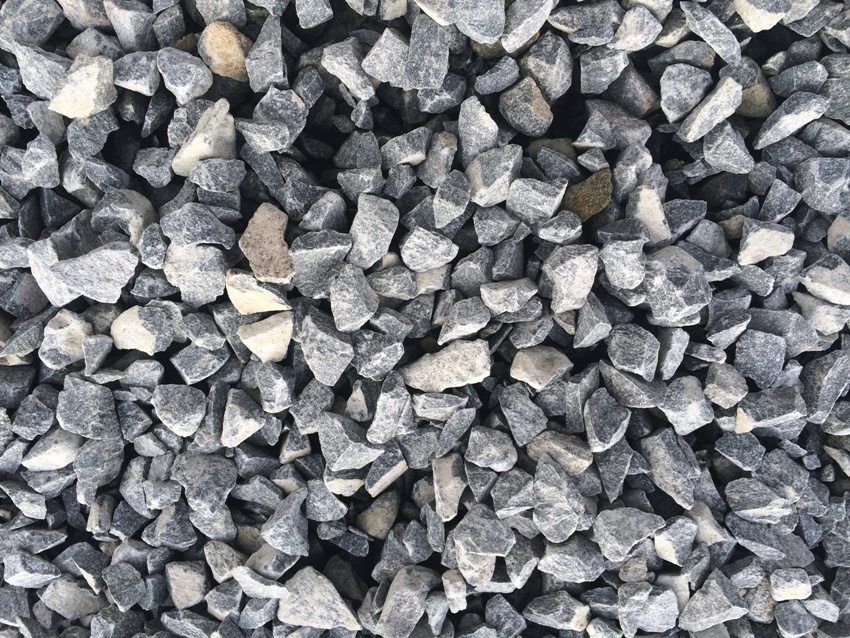
Consumption of materials. Table “Concrete proportions per 1m3”
The expenditure of components for the preparation of 1m3 concrete directly depends on the purpose of the structures and the brand of cement involved in the manufacture. To do this, we summarized the proportions of the composition 1m3 concrete.
Below are two tables of proportions of concrete per 1m3.
Table 1 – the proportions of concrete for grades M100, M200, M400 and M400:

Table 2 – the proportions of concrete for the grades M150, M250, M350 and M450:
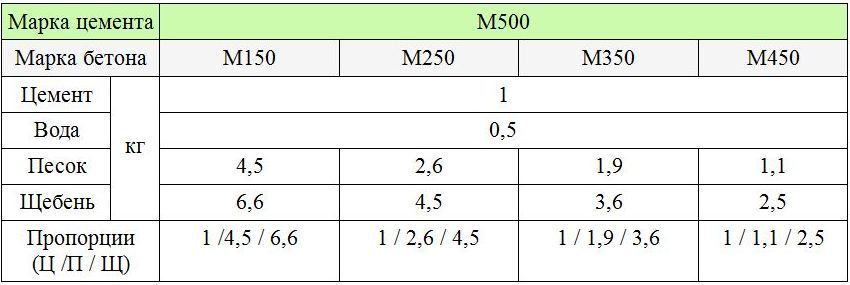
Thus, if it is necessary to produce concrete M200, the proportions will be on
1m? mortar – 1 / 3.5 / 2.6 (kg), for concrete M300, the proportions will be 1 / 2.4 / 4.3 (kg), the proportions of concrete M400 – 1 / 1.6 / 3.2 (kg ).
For example, you can calculate the quantitative composition of the components recorded in the table of proportions for the preparation of concrete M400 using cement M500. Take 20 buckets of cement. Sand proportions will be (20 x 1.6) = 32 buckets. Crushed stone, respectively – (20 x 3,2) = 64 buckets. And the water – (20 x 0.5) = 10 buckets. Knowing the density of all components, you can easily translate the required number of buckets into the units of measure by which materials are sold. So, a bucket with a capacity of 10 liters, filled with cement, will weigh 12 kg (10 x 1200), where 1200 kg / m? – the density of cement in bulk, a bucket of sand – 14 kg (10 x 1400), where 1400 kg / m? – the density of sand, the same amount of gravel will weigh 15 kg, given its density.

If concrete work is done in small quantities, for example, in private construction or one-time small works, it is advisable to stick to the proportions of concrete in buckets. Such quantitative measures are applied if it is not possible to place special equipment on the construction site, as well as when the solution is poured in small portions.
In the production of concrete for the construction of the foundation, you must adhere to the following proportions of concrete to the foundation below.
The table of proportions of concrete to the foundation in buckets, for brands M100, M200, M300 and M400:

Under the conditions of individual construction, a concrete solution for the foundation is prepared by measuring the parts of the components with buckets. It should be borne in mind that the bucket and spade for cement must be exceptionally dry. For more accurate proportions, the composition of sand and rubble in the bucket is slightly compacted and leveled along the edge of the bucket. The measured crushed stone with sand is well mixed in a convenient wide container, forming grooves where the prepared cement is poured. All ingredients (the amount of which is selected from the table of proportions) are fairly mixed until a mass that is uniform in color.
